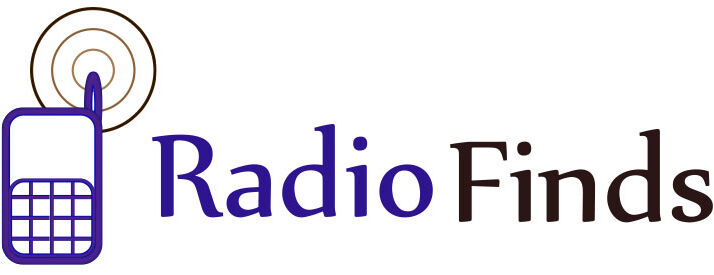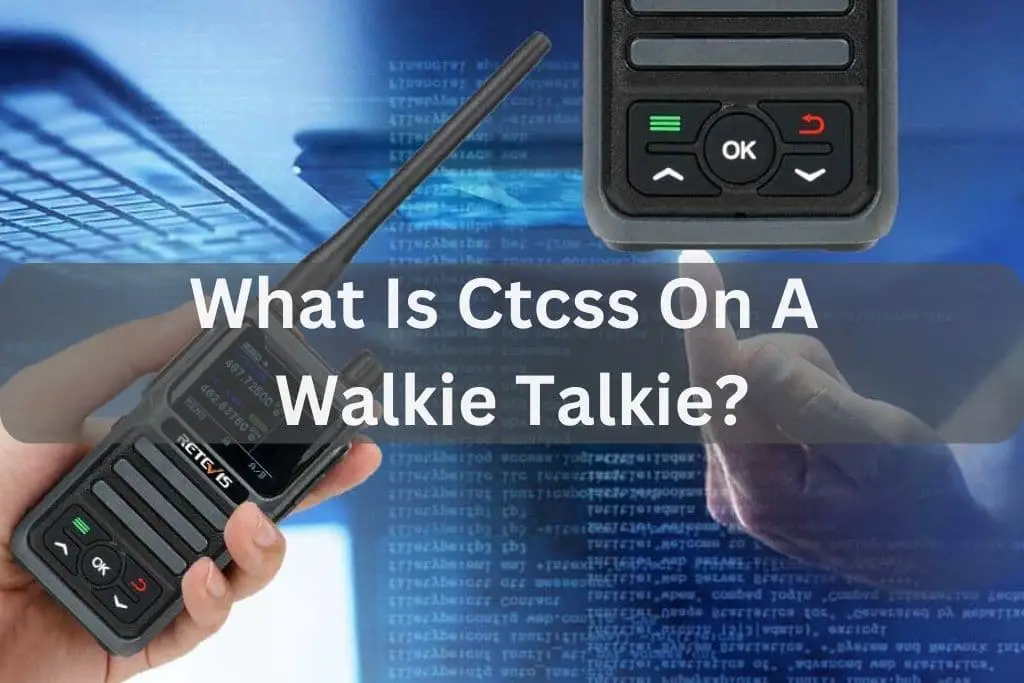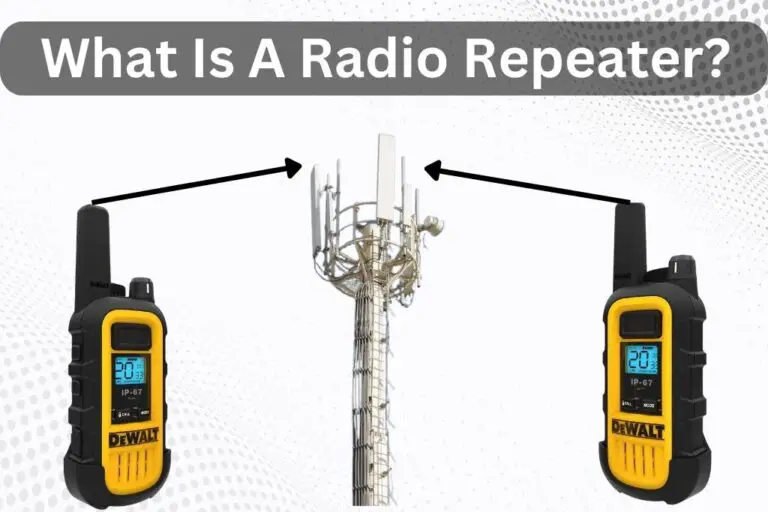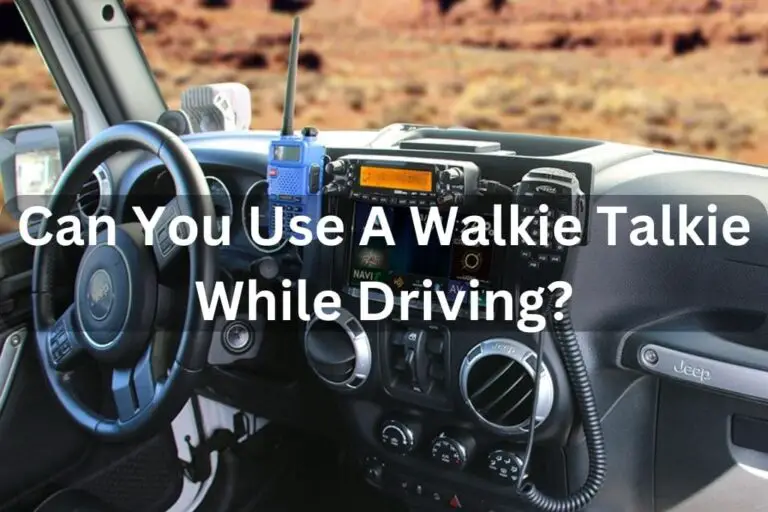What Is Ctcss On A Walkie Talkie? | How To Use Ctcss Tones?
If you’ve ever used a walkie talkie, you may have noticed a slight hissing sound when you transmit. This hissing noise is a continuous tone known as CTCSS.
CTCSS ensures your transmission does not interrupt other communications on the same channel. It’s also used to help you hear transmissions better in noisy areas.
As I said above, what is ctcss on a walkie talkie? If you use a walkie talkie, you may have noticed a feature called CTCSS (Continuous Tone-Coded Squelch System). This system enables multiple radio users to use the same channel without hearing each other’s messages.
CTCSS is a subaudible tone that is added to your voice signal. When you transmit, the tone is sent along with your voice.
The receiving radios only accept signals containing the accurate CTCSS tone.
What Is The Difference Between CTCSS And DCS On Two-Way Radios?
One difference between CTCSS and DCS is the number of available codes. CTCSS uses a limited number of tones (usually around 50), while DCS uses a much larger number of codes (usually around 1024).
They can be used to prevent other users from interfering with communication or to ensure that only specified users can communicate with each other.
CTCSS and DCS are two methods for adding a sub-audible tone to two-way radio communication. These tones are used to regulate access to a specific frequency or channel.
- CTCSS is an analog approach that employs a tone between 67 and 250 Hz to control channel access. The tone is sent with the audio signal to open the squelch (unmute the audio) on a receiver tuned to the same tone. As long as they utilize separate CTCSS tones, many users can share a single frequency without interfering with each other.
- DCS is a digital approach that controls access to a specific channel using a code rather than a tone. The code is sent with the audio stream and is used to open the squelch on a receiver that is programmed with the same code. DCS, like CTCSS, allows numerous users to share frequencies without interfering if they utilize different DCS codes.
Does Ctcss Offer Privacy?
Recently, there has been a push for CTCSS (Continuous Tone-Coded Squelch System) to improve privacy for radio communications. However, CTCSS does not offer any real privacy benefits.
CTCSS is a sub-audible tone that is transmitted along with the primary signal. The receiver is then only to accept calls with the correct CTCSS tone.
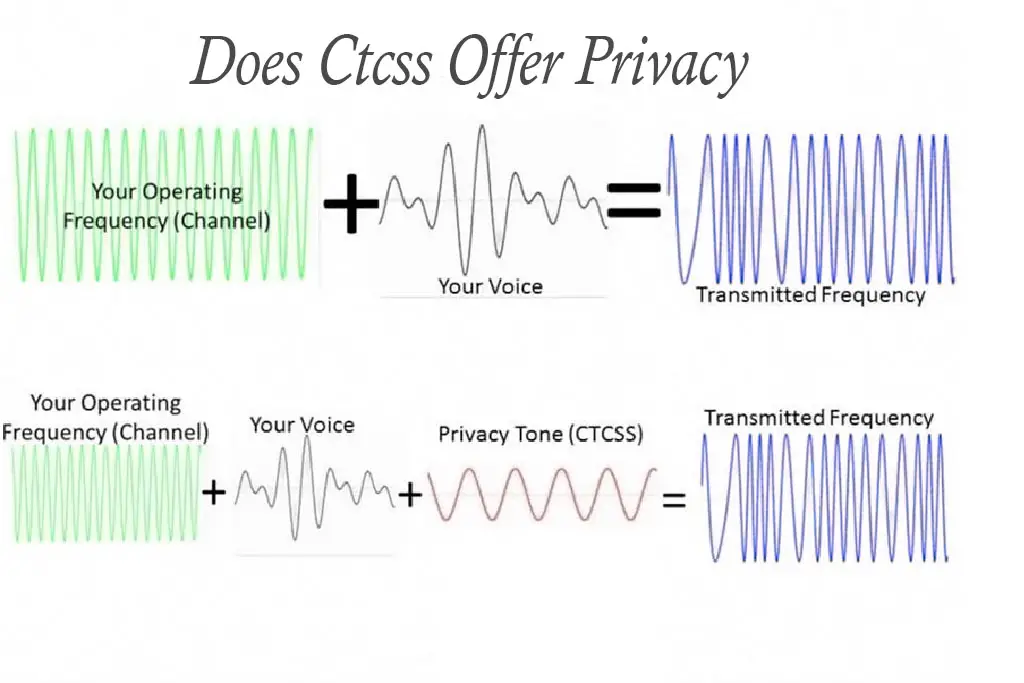
This system was designed to reduce interference by only allowing signals with the right tone to hear.
However, CTCSS does not offer any real privacy benefits. The tones are relatively easy to detect and decode, and some commercially available decoders will allow anyone to listen in on CTCSS-protected conversations.
What Is Ctcss Privacy Code?
CTCSS or DCS codes are privacy codes that can be programmed into two-way radios.
These codes allow users to select a specific principle limiting who can hear their transmissions.
People can use this feature to ensure that only certain people can access their conversations.
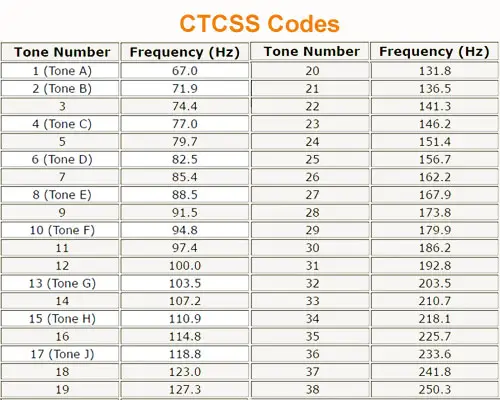
Various CTCSS or DCS codes are available, and the right one must be chosen.
Codes can significantly impact your conversations’ privacy. It is beneficial to learn about them, therefore.
How many Ctcss tones are there?
There are 38 CTCSS tones. Each tone is used to identify a different caller. When you receive a call, the CTCSS tone will play. It then goes up to you to choose, no matter not to answer.
Businesses that need to communicate with multiple employees often use the CTCSS system. Amateur radio enthusiasts also use it.
Knowing how many tones there are is essential when using a CTCSS system. This way, you can adequately identify each caller.
How Do I Turn Off Ctcss On My Walkie Talkie?
You’re not alone if you’ve ever wondered how to turn off CTCSS on your walkie talkie. This common question is quickly answered with a few simple steps.
Select “code” or “CTCSS” from the main menu to disable CTCSS on most walkie talkies. Then, scroll through the available options until you find the setting for “off.”
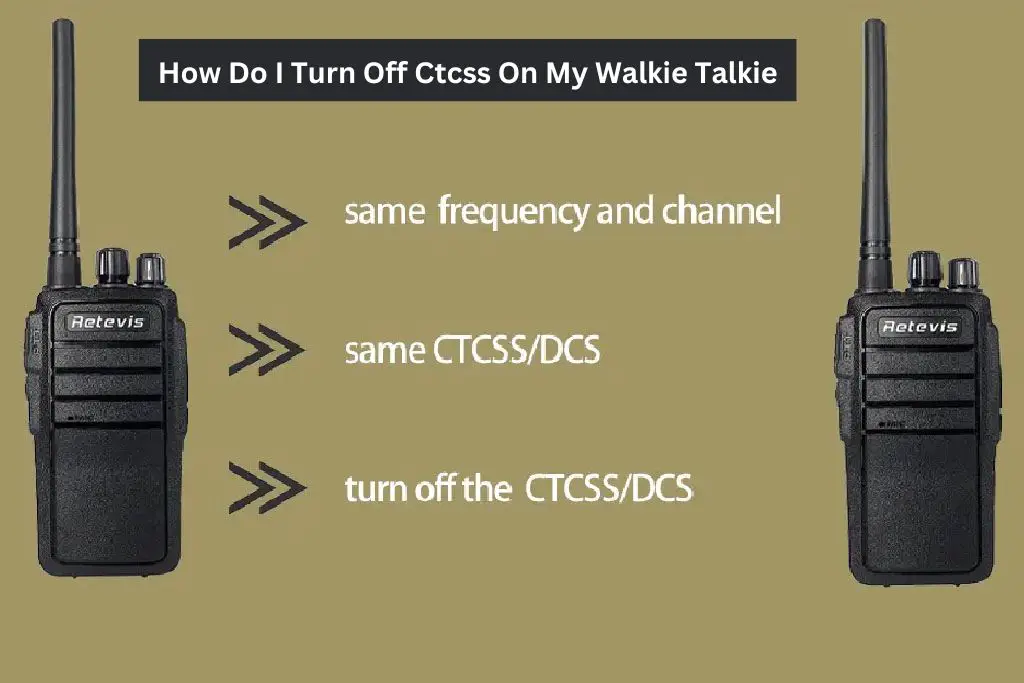
Once you’ve selected “off,” your walkie talkie will no longer transmit the sub-audible tone used to activate the CTCSS function.
Remember that turning off CTCSS may also disable other features on your walkie-talkie, so consult your owner’s manual before making any changes.
Frequently Asked Question
1. How many DCS codes are there?
There are 83 different DCS codes, each with its unique function. DCS codes regulate several aspects of the system, such as how it behaves or responds to various stimuli.
While some DCS codes are simple and only require a few lines of code, others can be pretty complex and may take up several pages.
All DCS codes, regardless of size or complexity, are essential in keeping a system running smoothly.
2. What is DCS on walkie talkie?
DCS, or Digital Coded Squelch, encodes and decodes audio signals on a two-way radio or walkie-talkie. It is used to reduce interference and improve the overall signal quality of the radio transmission.
DCS is a helpful feature on walkie-talkies and two-way radios that can help to improve the quality and security of radio communications.
A digital code is added to the audio signal before transmission in a DCS system. The code is checked to ensure it is correct when the signal is received.
The audio signal is allowed if the code is correct and the listener hears the transmission.
If the code is incorrect, the audio signal is blocked, and the listener does not hear the transmission.
3. What do CTCSS and DCS mean?
CTCSS and DCS are used in radio communications systems to allow multiple users to share the same frequency without interfering.
They can also restrict access to a specific channel or group of media to authorized users only.
CTCSS and DCS are different methods that encode a subaudible tone onto a radio signal.
These tones are not audible to the human ear but can be detected and used by a receiver to filter out unwanted signals or to access a specific channel.
CTCSS stands for Continuous Tone-Coded Squelch System. It works by adding a steady, continuous tone to the radio signal at a frequency outside the range of human hearing.
DCS stands for Digital-Coded Squelch. It adds a digital code to the radio signal instead of a continuous tone.
4. How many types of walkie talkies are there?
There are two types of walkie talkies: FRS and GMRS. FRS radios are the most common type of walkie-talkie.
They’re small, lightweight, and simple to use. They don’t require a license to operate, so they’re perfect for short-range communication, like keeping in touch with friends while hiking or camping.
GMRS radios are slightly larger and more potent than FRS radios. Having a more extended range, they can communicate over longer distances.
A GMRS radio needs a license to operate. However, a lot of people think they’re worth the extra work.
Final Thought : (What Is Ctcss On A Walkie Talkie)
CTCSS is a sub-audible tone used to help reduce interference on a walkie-talkie. It achieves this by only allowing the user to hear messages that are intended for them.
This can be extremely helpful in crowded areas or when many people use the same channel.
Video Guide
Also Read
Can Walkie Talkies Talk To CB Radios? – Best Info In (2023)
Are Walkie Talkies Secure? – Best Secure Communication 2023
What Frequency Do Walkie Talkies Use? – Get Your Answer
Do All Motorola Walkie Talkies Work With Each Other? Explain
